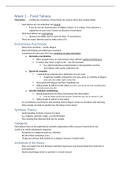Samenvatting
Summary Everything you need for the exam!
- Vak
- Instelling
This document is a summary of all the lectures and includes notes of the article to be able to navigate through those during the exam, or summarise important paragraphs. Perfectly suitable to pass the open book exam, or in case this changes back to an on campus exam: the lecture notes are highly us...
[Meer zien]










